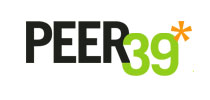 On Wednesday, semantic technology provider Peer39 announced “the addition of two additional channels of attributes, Quality and Safety (…) Advertisers participating in secondary marketplaces and Real Time Bidding will now be able to define the environment in which their advertising will appear.” Read more.
On Wednesday, semantic technology provider Peer39 announced “the addition of two additional channels of attributes, Quality and Safety (…) Advertisers participating in secondary marketplaces and Real Time Bidding will now be able to define the environment in which their advertising will appear.” Read more.
CEO Andy Ellenthal discussed the announcement and its implications.
AdExchanger.com: You’re branching into the ad verification space by adding the quality and safety attributes – why?
What we do is very different from ad verification. We help advertisers achieve the optimum placement for their ads by determining the environment of pages even before they bid or buy the placement, before the ads run. An ounce of prevention is worth a pound of cure, right?
From speaking to buyers we know verification has been considered an important insurance policy for ad buys. What makes Peer39’s approach a game changer is that we’re inserting this page-level intelligence into RTB environments to help advertisers make better decisions about the pages that they choose to reach their target audience in. We developed the new Quality and Safety channels in response to the growing demand from advertisers to have consistent and persistent data attributes that are always present on every page.
How will the buyer use your cookie-free tech when addressing audiences? If the marketer’s dressing audiences, shouldn’t Peer39 be looking at the audience (cookie), too?
Audience targeting is clearly an important strategy for advertisers. It is hard to argue with the effectiveness of retargeting or, as an example, of serving the right ad to an ecommerce shopper. But audience alone doesn’t go far enough.
Our Quality channel lets advertisers choose the attributes that define a quality environment to them. Our Safety channel lets advertisers choose the attributes that define safety to their brand. While the attributes which comprise these channels are objective, consistent, and persistent across all pages, how buyers use Quality and Safety data is subjective and best left up to the advertiser or their representatives. Both of these channels define the environments that they will want to target within regardless of the tactic. User targeting from first or third parties, or our Categories, it makes no difference.
By better defining their environment advertisers can find ad placements where audiences will respond more favorably to an ad. It’s important to us that our technology is complementary to other targeting approaches, including technologies that require cookies. That said we all know that there are certain limitations with cookie based targeting approaches. Scale can be an issue. If a buyer wants 200 million impressions there may only be a cookie match on say 50 million impressions. Rather than buying 150mm impressions blindly, we can provide a comfort level that their ads will wind up on pages that align with their own threshold for Quality and Safety.
In a nutshell, how would you label Peer39’s product and services today?
Peer39 uses its semantic technology to provide page-level intelligence that gives advertisers control in defining, and sourcing their ideal ad environment.
How big a role is real-time bidding playing a part in Peer39’s strategic vision going forward?
Making Display advertising work has always been about scale. We’ve all seen the tremendous growth in RTB. The current challenge is how to attract more buyers running larger campaigns. Peer39 can accelerate that growth. We have something of value to say about virtually every impression we see. With a foundational and consistent data set advertisers find more comfort with RTB and the associated scale. The net result is that buyers who till now have only been dipping their toes will dive-in head first. And that is good for everyone.
By John Ebbert










